Presentation of the EROS software
The ÉROS software (Ensemble de Rivières Organisé en Sous Bassin or Ensemble of Rivers Organised by Sub-Basin) can be used to calculate, from the sequence of meteorological data (precipitation, potential evapotranspiration, air temperature) on the sub-basins of its catchment area:
- The flow rate in the rivers at the outlet of all or part of the sub-basins;
- The piezometric level at a point in the underlying open water table in all or part of the sub-basins: the effects of pumping or river injection can be taken into account.
And also, as an option:
- The nitrate concentration in the river at the outlet of the sub-basin;
- The nitrate concentration in the groundwater table below the lower part of the sub-basin.
ÉROS is made up of a cluster of global hydrological models with reservoirs. In each sub-basin of the cluster it simulates the main mechanisms of the water cycle (rain, evapotranspiration, infiltration, run-off) by simplified physical laws. These simplified physical laws correspond to flows through successive reservoirs.
The calculations can be made for daily, weekly, decadal (10-day) or monthly intervals. Users can also choose much shorter time intervals, e.g. half hourly or every five minutes.
Snowmelt can also be included in the calculations.
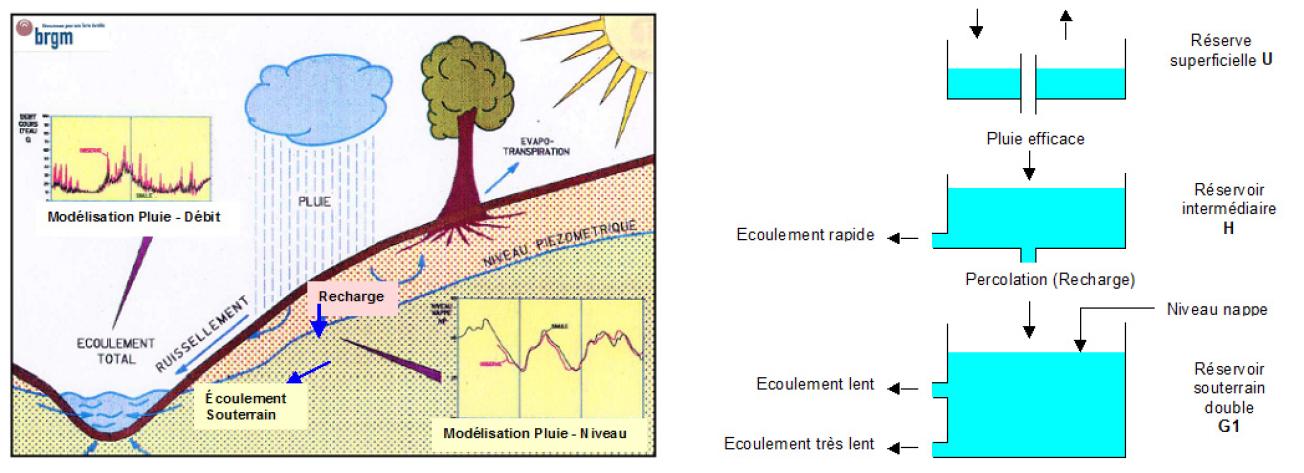
Schematic diagram of the GARDENIA model, and diagram with a groundwater reservoir comprising two outlets.
© BRGM
ÉROS functionalities
The ÉROS software offers the following features:
- Calculating the balance of rainfall, actual evapotranspiration, run-off and infiltration into the underlying water table,
- Generating long series of flow rates or piezometric levels from historical rainfall data, after calibration for a relatively short period,
- Analysing the influence of climate change on flow rates and levels,
- Analysing consistency between climate observations and observations of flow rates or piezometric levels.
In practice, ÉROS enables analysis of the hydrological functioning of a heterogeneous catchment basin or one that is subjected to pumping from rivers and the extrapolation of data flow rates and/or levels. It can therefore support the design of engineering structures such as dams, or amenities such as car parks, water abstraction points in rivers, micro hydro-electric plants, etc.
Once calibrated, the model can:
- for a given catchment basin, recreate the flow rates of rivers and/or the piezometric levels at a given point in the underlying aquifers during periods when such measurements are not available,
- simulate:
- flow rates resulting from dry periods (due to low water periods or dam design) or exceptional precipitation sequences (flood risks),
- groundwater piezometric levels at a given moment based on observed precipitation and extrapolated to produce precipitation scenarios (drought or high water periods).
The ÉROS computing program is a highly suitable tool for regional syntheses that require coherent modelling of a set of nested catchment basins.
- predict the influence of climate change on a large basin based on scenarios of rainfall and potential evapotranspiration.
ÉROS also offers the following features:
- Simultaneous calibration of modelling parameters for series of flow rates measured at the outflow of catchment basins and sub-basins, and for series of piezometric levels at a point that is representative of certain sub-basins. This function significantly improves the reliability of the calibration.
- Time series of abstraction (or injection) data of flow rates in rivers in certain sub-catchment basins can be included in the calculations.
The user may choose to calculate a nitrate balance and transfer rate, based on farming practices and the needs of the crops in each sub-basin.
ÉROS can then also calculate for each sub-basin:
- The nitrate concentration in the river at the outlet of the sub-basin,
- The nitrate concentration in the groundwater table below the lower part of the sub-basin.
The nitrate transfer is calculated using the BRGM BICHE calculation scheme (Thiéry & Seguin, 1985c; Thiéry, 1990).

Graphs from the EROS software.
From left to right and from top to bottom: 1. Nash coefficients on the simulated daily flow rates of the 41 basins of the Seine. 2. Daily flows of the Seine observed and simulated at Poses (65,000 km2). Nash coefficient = 0.92. 3. Loire catchment basin at Montjean discretised into 68 sub-basins - ICC-Hydroqual research project (Moatar et al., 2010). 4. Daily flow rates of the Vienne observed and simulated at Ingrandes (10,040 km2). 5. Daily flow rates of the Loire observed and simulated at Montjean (100,000 km2). 6. Piezometric level in the underlying water table of the sub-basin upstream of Tours. 7. Mean monthly minimum flow rate of the Loire for each year at Tours for a climate change scenario. 8. Nitrate concentrations observed and simulated in the springs of Provins from 1947 to 1984. 9. Nitrate concentration observed and simulated in the springs of Les Trois Fontaines from 1989 to 2008.
© BRGM
Working principle of the ÉROS software
In each sub-basin, ÉROS uses the GARDENIA lumped hydrological model with reservoirs. Each global model simulates the main water cycle mechanisms in a catchment sub-basin (rainfall, evapotranspiration, infiltration, run-off) by applying simplified laws of physics. These simplified physical laws correspond to flows through successive reservoirs.
In a sub-basin, transfers from one reservoir to another are governed by simple laws described by the model's design parameters (retention capacity of the ground, transfer time, flooding thresholds, etc.).
The global hydrological model provides the elemental flow at the outlet of the sub-basin and the piezometric level at a point representative of the underlying water table.
The elemental flows of the sub-basins are then aggregated from upstream to downstream, taking into account the transfer time from one basin to another.
Because the process produces an overall schematic picture at a sub-basin scale and because of the complexity of the actual hydrological system, these parameters, although physically meaningful, cannot easily be deduced a priori from the physiographic characteristics of a catchment basin at a given point (geology, plant cover, etc.).
The modelling parameters must therefore be determined by simultaneous adjustment (calibration) of:
- series of flow rate observations at the outlet of sub-basins, or some of them;
- series of observations of piezometric levels in the underlying water table of certain sub-basins.
Data required for using ÉROS
The data required to calibrate the parameters are time series with constant time steps:
- Series of model "input" data for each sub-basin:
- Continuous time series of climate data used as input: rainfall and potential evapotranspiration (and air temperature if snowmelt needs to be taken into account);
- Possibly, series of model "input" data in some sub-basins:
- Possibly a time series of river abstraction flow rates (or injection) in some sub-basins;
- Model control data series in some sub-basins:
- Time series of flow rate observations at the outlet of sub-basins. These series may have gaps in observations at certain time steps.
- Time series of observations of piezometric levels in the underlying water table of sub-basins. These series may have gaps in observations at certain time steps.
These control series will be compared with the corresponding model data.
ÉROS software
ÉROS is a generalised application of GARDENIA. It is used to produce models of heterogeneous catchment basins as ranked clusters of GARDENIA models, where each GARDENIA model is applied to a sub-basin.
Free licensing available
ÉROS is available for downloading for Windows 8 or10 ( for 64-bit computers).
Instructions for use
Publications on EROS and related software
Thiéry, D. (2018a) – Logiciel ÉROS version 7.1. Guide d’utilisation. Rapport BRGM/RP-67704-FR, 175 p., 82 fig.
http://infoterre.brgm.fr/rapports/RP-67704-FR.pdf (Accès Mai 2021)
Thiéry D. (2015a) - Validation du code de calcul GARDÉNIA par modélisations physiques comparatives. BRGM/RP-64500-FR, 48 p., 28 fig.
http://infoterre.brgm.fr/rapports/RP-64500-FR.pdf (Accès Mai 2021).
Thiéry D. (2014) - Logiciel GARDÉNIA, version 8.2. Guide d’utilisation. BRGM/RP-62797-FR, 136 p., 67 fig., 2 ann.
http://infoterre.brgm.fr/rapports/RP-62797-FR.pdf (Accès Mai 2021).
Jeannin, P-Y, … , Thiéry, D., … (2021) - Karst modelling challenge 1: Results of hydrological modelling. Accepted for publication in Journal of Hydrology, (Manuscript number HYDROL40315R1).
Tilmant, F., Nicolle, P., Bourgin, F., Besson, F., Delaigue, O., Etchevers, P., François, D., Le Lay, M., Perrin, C., Rousset, F., Thiéry, D., Magand, C., Leurent, T., Jacob, E. (2020) – PREMHYCE : Un outil opérationnel pour la prévision des étiages. La Houille Blanche 2020, 5, 37–44.
https://doi.org/10.1051/lhb/2020043
Nicolle, P., Pushpalatha, R., Perrin, C., François, D., Thiéry, D., Mathevet, T., Le Lay, M., Besson, F., Soubeyroux, J.-M., Viel, C., Regimbeau, F., Andréassian, V., Maugis, P., Augeard, B., and Morice, E. 2014 - Benchmarking hydrological models for low-flow simulation and forecasting on French catchments. Hydrol. Earth Syst. Sci., 18, 2829-2857.
https://doi.org/10.5194/hess-18-2829-2014
https://hal-brgm.archives-ouvertes.fr/hal-01061927
Thiéry, D. 2010 – Reservoir Models in Hydrogeology. in “Mathematical Models Volume 2, chapter 13, pp. 409-418 • Environmental Hydraulics Series”. Tanguy J.M. (Ed.) – Éditions Wiley/ISTE London. ISBN: 978-1-84821-154-4.
Moatar, F., Dupont, N. (2016) - La Loire fluviale et estuarienne - Un milieu en évolution. Édition Quae. 320 p. ISBN : 978-2-7592-2401-2 http://www.quae.com/fr/r4749-la-loire-fluviale-et-estuarienne.html
Moatar, F., Ducharne, A., Thiéry, D., Bustillo, V., Sauquet, E., Vidal, J.P. 2010 - La Loire à l’épreuve du changement climatique. Géosciences, No. 12, 78-87.
https://hal-insu.archives-ouvertes.fr/insu-00549254/document
Thiéry, D. (2018b) – Modélisation hydrologique globale des débits de 23 sources karstiques avec le logiciel ÉROS. Rapport BRGM/RP-67723-FR, 66 p., 23 fig.
http://infoterre.brgm.fr/rapports/RP-67723-FR.pdf (Accès Mai 2021)
Thiéry D., 1992 - Influence de la physiographie d'un bassin versant sur les paramètres de modélisation hydrologique globale. Application à la Bretagne et à la Moselle. VIIIèmes journées hydrologiques de l'ORSTOM Montpellier "Régionalisation en hydrologie, application au développement". In Le Barbé et E. Servat (Ed) ORSTOM Editions, pp. 517-529.
https://hal-brgm.archives-ouvertes.fr/hal-01061970/document
Thiéry, D. et Moutzopoulos, C. (1992) – Un modèle hydrologique spatialisé pour la simulation de très grands bassins : le modèle EROS formé de grappes de modèles globaux élémentaires. VIIIèmes journées hydrologiques de l'ORSTOM « Régionalisation en hydrologie, application au développement ». In Le Barbé et E. Servat (Ed.) ORSTOM Éditions, pp. 285-295.
https://hal-brgm.archives-ouvertes.fr/hal-01061971/document
Publications on nitrate transfer
Surdyk, N., Gutierrez, A., Baran, N., Thiéry, D. (2020) - A lumped model to simulate nitrate concentration evolution in groundwater at catchment scale. Journal of Hydrology, Volume 596, 2021, 125696,
https://doi.org/10.1016/j.jhydrol.2020.125696
Ducharne, A., Sauquet, E., Habets, F., Déqué, M., Gascoin, S., Hachour, A., Martin, E., Oudin, L., Pagé, C., Terray, L., Thiéry, D., Viennot, P. (2011) – Évolution potentielle du régime des crues de la Seine sous changement climatique. La Houille Blanche, N°1-2011, pp. 51-57.
https://hal.archives-ouvertes.fr/hal-00557280/document
Habets, F., Boé, J., Déqué, M., Ducharne, A., Gascoin, S., Hachour, A., Martin, E., Pagé, E., Sauquet, E., Terray, L., Thiéry, D., Oudin, L., Viennot, P.( 2013) –Impact of climate change on the hydrogeology of two basins in Northern France. Climatic Change journal. Online version: https://doi:10.1007/s10584-013-0934-x
Thiéry, D., Lopez, B., Bourguignon, A., Gutierrez, A., Baran, N. (2009) – Modélisation des transferts de nitrate sur le site karstique des Trois Fontaines pour contribuer à la protection des captages vis-à-vis des pollutions diffuses et de l’impact des pratiques agricoles. Revue Géologues n°163 Déc. 2009 pp. 82-86.
Thiéry, D., (1990) - Modélisation des transferts de nitrates dans un bassin versant. Validation du modèle Biche et analyse de sensibilité. Rapport BRGM/RR-30976-FR, 78 p., 38 fig.
http://infoterre.brgm.fr/rapports/RR-30976-FR.pdf (Accès Mai 2021).
Thiéry, D., Seguin, J.J. (1988) – Prévision des variations de concentration en nitrates dans une source au moyen d'un modèle hydrologique global. 4e Symp. int. sur l'analyse des systèmes appliquée à la gestion des ressources en eau, Rabat (Maroc), 11-13 septembre 1988, CR., 1988, p. 215-229.
https://hal-brgm.archives-ouvertes.fr/hal-01070950 (Accès Mai 2021).
Thiéry, D. (1987) Étude de l'influence de la variabilité climatique sur le transfert des nitrates dans un bassin versant. Applications aux sources de la Voulzie (Provins - Seine-et-Marne). Rapport BRGM 87 SGN 869 EAU, 42 p.
http://infoterre.brgm.fr/rapports/87-SGN-869-EAU.pdf (Accès Mai 2021).
Thiéry, D., Seguin, J.J. (1985c) - Modélisation globale des transferts de nitrates dans un bassin hydrogéologique pour prévoir l'évolution des concentrations dans les eaux souterraines. Description du modèle BICHE -trois exemples d'application-.- Ministère de l'Environnement, Direction de la Prévention des Pollutions, Service de l'Eau.- Rapport BRGM 85 SGN 663 EAU, 182 p.
http://infoterre.brgm.fr/rapports/85-SGN-663-EAU.pdf (Accès Mai 2021).


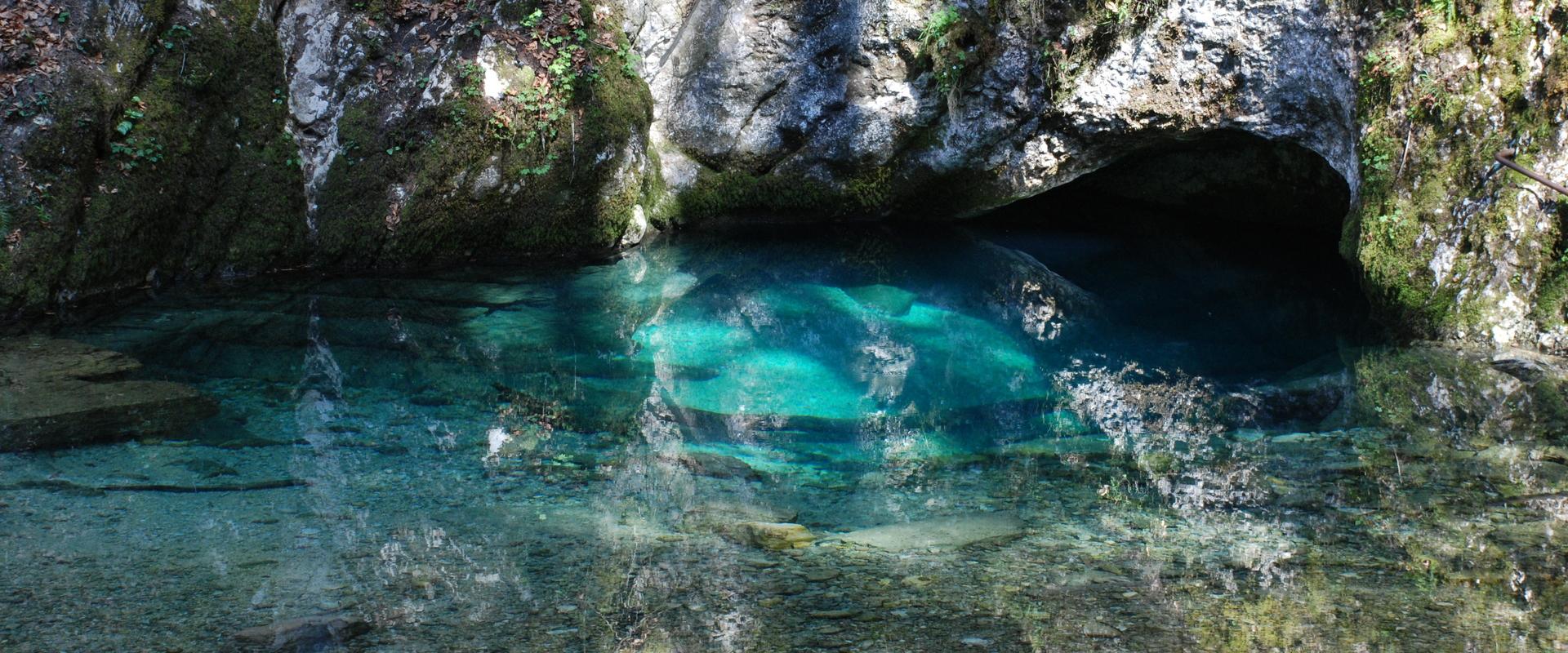

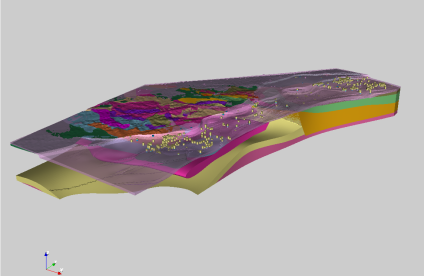
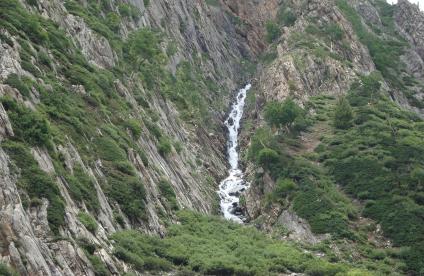
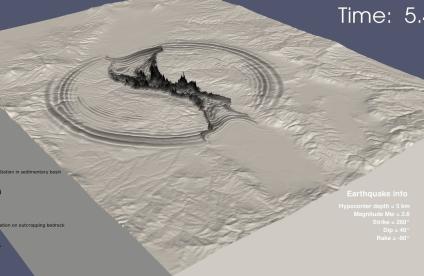
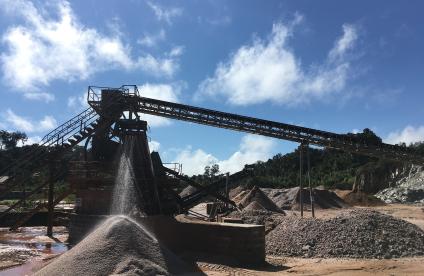

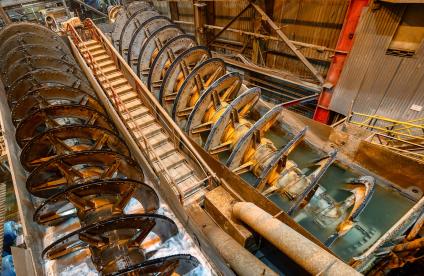
From left to right: 1. RExHySS research project (Ducharne et al., 2011). 2. Spatial distribution of effective rainfall (Runoff + Infiltration, in mm/year) calculated for the Seine basin. 3. Loire catchment area at Montjean discretised into 68 sub-basins. ICC-Hydroqualqual research project (Moatar et al., 2010). 4. Example of a simplified diagram representing the Marne upstream from Chalons.